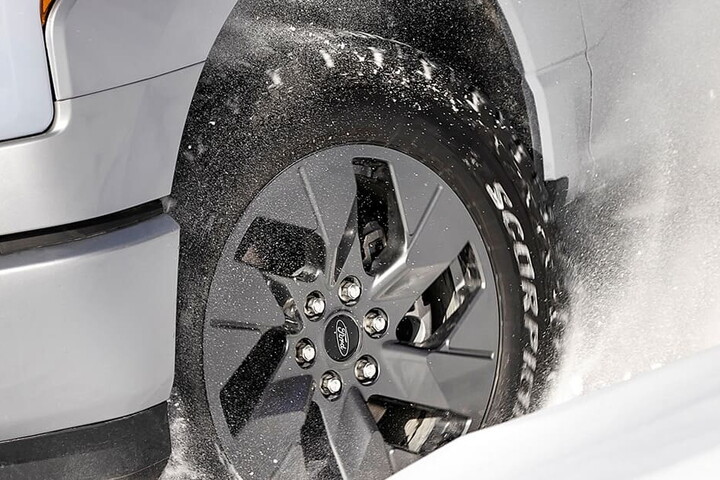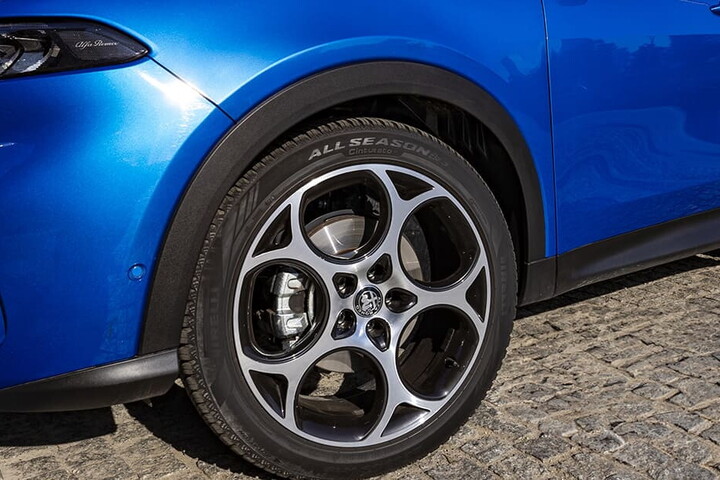It is above all a matter of safety. But also, over time, of making good savings. Taking care of your tyres is not just about switching between the winter and the summer set or checking inflation pressure from time to time. Also the presence of the TPMS system ( Tyre Pressure Monitoring System or Tyre pressure monitoring system) when equipping a car it helps in everyday life but does not exempt the driver from constant pressure checking, at least once a month and on the basis of the conditions in which it is used.
FIRST OF ALL, WEAR
Correctly inflated tyres allow you to drive in maximum safety at all times. Driving with the correct pressures is essential to maximize performance, braking, traction, avoid premature wear and/or irregular wear, and reduce the risk of accidental damage to the tread, thus extending the life of the tire. You are reminded that correct pressures are indicated by the vehicle manufacturer, and can be found inside the maintenance booklet and sometimes also on some easily accessible part of the vehicle body. Therefore, at least once a month, check the inflation pressure of the "cold" tyres, including the spare wheel. Under no circumstances should the cold pressures of the tyres be lower than the pressure indicated in the maintenance booklet, or higher than the maximum cold pressure on the side of the tire. Never reduce the pressures if the tyres are hot. It is good to know that over-inflation involves a reduction in the contact area between the tyre and the road surface, with more probability of suffering accidental damage from impact, and premature wear in the central area of the tread, while under-inflating causes excessive flexing, deterioration. of the tire and premature / uneven wear on the tread shoulders. Therefore, always and only rely on the instructions written by the vehicle manufacturer: the only correct pressures are those indicated in the vehicle maintenance booklet, and must absolutely be respected.

ROTATE FRONT AND REAR
Checking tyres also mean making an accurate and precise rotation, between front axle and rear axle, provided that there are no different tyre sizes between the two axles. Pirelli recommends applying the tire rotation procedure as defined in the vehicle manufacturer's use and maintenance booklet. Where this procedure is not specified, to optimize tire wear and performance, we recommend reversing the front axle covers with those of the rear axle every 8,000-10,000 km.
Resist the cliché of involving the spare tire in the rotation resists, as this is a mistake: the important thing is that even the latter is always ready for any possible emergency, by monitoring pressure monthly and, in any case, always before long journeys.
Tyre rotation obviously extends their working life and when the time comes you can change the entire set. This will ensure the performance of your car remains balanced. Rotating is also an opportunity to accurately check the tyres, valves and rims which are other fundamental components for the correct functioning of the tires.
STORE THEM PROPERLY
The importance of storing tyres once they have been removed from the vehicle is often underestimated. Specialized tyre specialists have areas equipped for this purpose but it is also possible to store them in a box or in a space owned by them. Once again, there are some precautions not to be overlooked for the care and integrity of your tyres. The signs of poor storage are very visible and are usually recognisable as surface cracks.
In any case, once the surfaces have been thoroughly cleaned of any oily residues, petrol or other, it is necessary to store the tyres in a dry, ventilated place and preferably at a temperature of below 25°, protected from sunlight and bad weather. The location must be away from chemicals, solvents or hydrocarbons; sources of heat, incandescent bodies or materials that can cause sparks and / or electric discharges; sources of ozone (transformers, electric motors, welding devices…).
Storage areas and equipment must not contain:
- equipment that generate ozone (transformers, electric motors, welding devices, etc.), and combustion gases and vapors that can generate ozone due to photochemical process must also be excluded.
- sources of heat, incandescent bodies or materials that can cause sparks and/or electric discharges, traces of solvents, fuels, hydrocarbons, lubricants, chemicals, acids, disinfectants, rubber solutions, etc.
Again, it may all seem obvious, but it is not. The best way to store the tyres is vertically, in a single row on a shelf placed at least 10 cm from the ground, with the sides arranged vertically so that the profile is not altered, in practice the tires must not undergo any deformation, due to tension or crushing. If storage is short (no later than 4 weeks), stacking can be used one on top of the other, repeating the stack weekly by reversing the order of the tires, without, of course, placing weights on the stack. If the tyres are mounted on the rims, the best storage is in the stack, and does not require the weekly reversal of the order of the tires.
Finally, an elementary but useful trick: mark your tires with chalk or any other erasable material, indicating whether it is was on the right or left or on the front or rear axle. In this way, you can easily recognize them when they need to be fitted again and have all the information you need for correct rotation.




